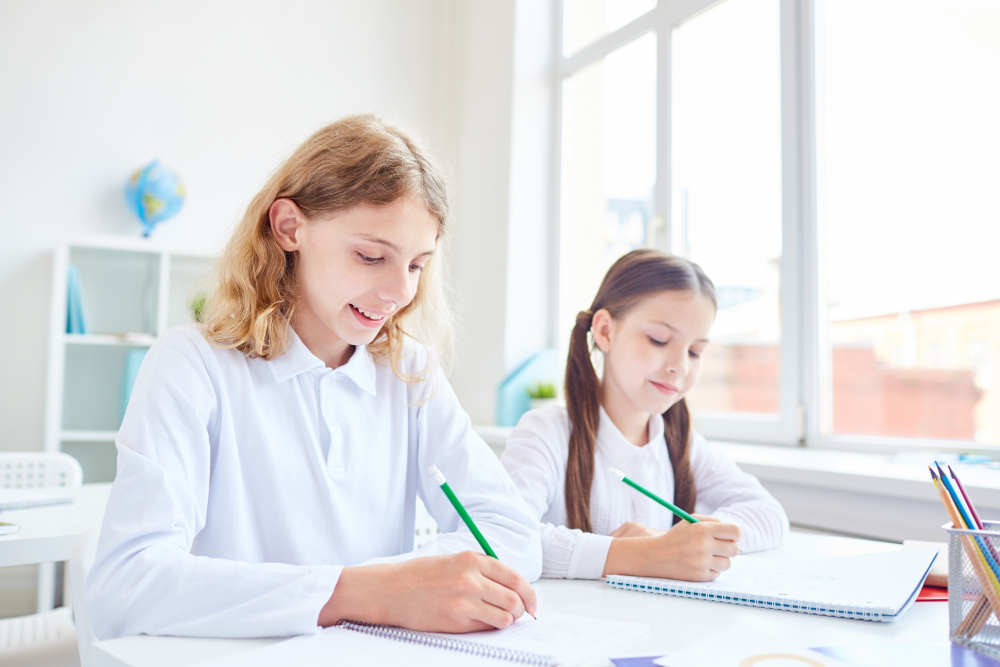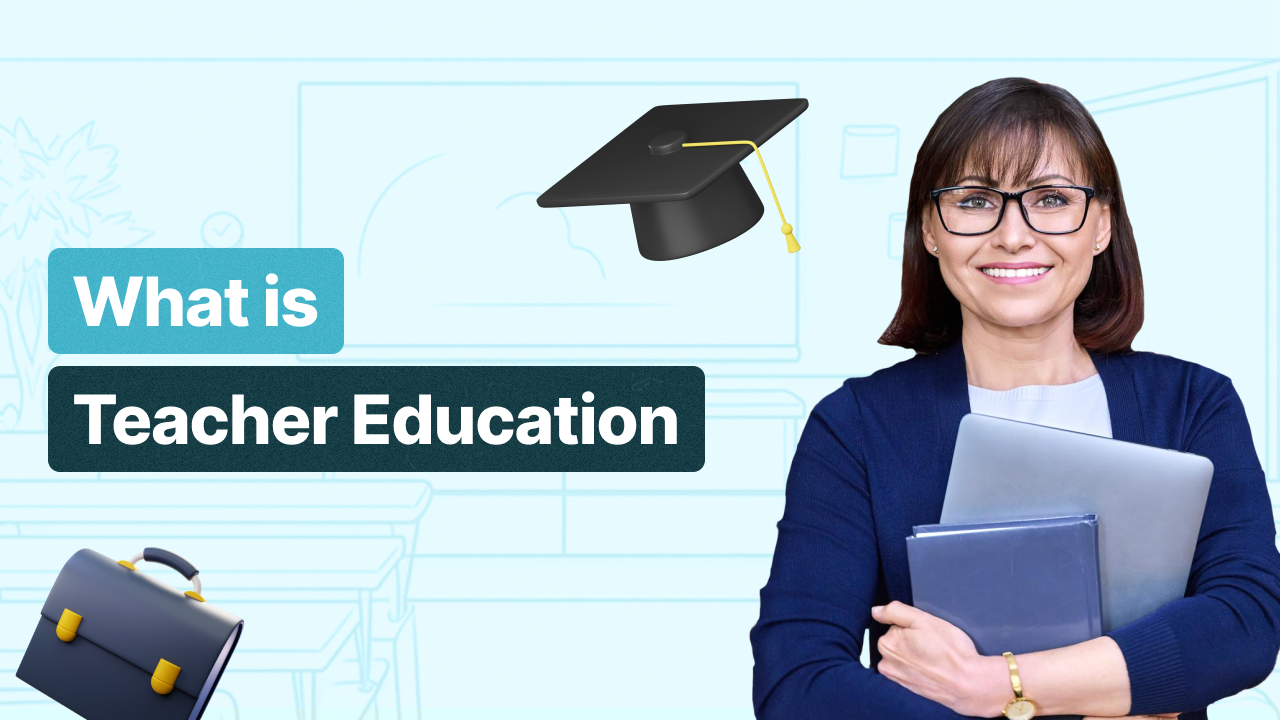
Reflection is a term you've probably come across numerous times in scientific contexts, and it's something you encounter every day while brushing or grooming. However, the word carries profound significance. While you see your physical self in the mirror daily, you know what?
In the world of education, Reflection takes on a distinct and extraordinary meaning. It goes beyond looking at the physical aspect of yourself and entails various facets such as your work, approaches, philosophy, outcomes, and more. So, let's delve further into this fascinating concept.
The education sector has recently undergone significant changes, and so have the teaching methods, strategies, and approaches. With new trends and technological advancements, as a teacher, you regularly need to observe, think, assess, and modify your teaching-learning process to reach the highest level of teaching, which is the REFLECTIVE LEVEL.

The reflective level is the highest level in teaching, where teachers engage in thoughtful and deliberate approaches. It aims to provide learners with high-quality educational experiences that promote the full utilisation and improvement of their cognitive abilities.
John Dewey introduced the idea of "Reflective Thought". Over time, terms such as "critical thinking", "problem-solving", and "higher-level thinking" emerged to describe similar concepts.

Reflective teaching is a process of ‘looking at what you do in the classroom, thinking about why you do it, and thinking about if it works. It is a process of self-observation and self-evaluation.
It is where teachers continuously introspect and critically analyse their own teaching strategies, beliefs, and assumptions to improve their instructional methods and student learning outcomes.
It's about examining your own teaching process before, during, and after you teach a course. A reflective teacher reflects on the following:
This process allows teachers to evaluate and enhance their teaching practises through various methods we will discuss. As a result, it not only helps teachers improve their teaching methods but also benefits students by continuously enhancing what and how they are taught.


Reflection in teaching is like taking a step back to admire a beautiful painting you've created. Just as an artist reflects on their work to see what they did right and what they could improve, the same way a teacher reflects on their lessons to evaluate their teaching methods and strategies.
The term "Reflection" refers to the action of looking back or contemplating something.
Reflection is a metacognitive strategy that aids teachers in critically analysing their experiences, actions, and decisions within the context of their teaching and learning practises. The more we reflect, the more we understand our role as teachers.
Reflection-for-Action is a way of reflective thinking to enhance the effectiveness of your teaching and learning processes. It is a proactive form of reflection commonly referred to as 'closing the gap' reflection. It entails making changes based on your reflections, which can occur in two distinct timeframes:


Reflection-in-action refers to contemplating your actions and making adjustments in real-time.
It involves your ability to engage in conscious thinking during the execution of tasks, enabling you to navigate intricate and unpredictable circumstances or requirements effectively.
Example:
Of a teacher, Louis, teaching the topic ‘Why Trees are Essential to Our Lives’ to grade 6
Reflection-on-action refers to contemplating your actions and making adjustments after they have been performed, and assessing the results and consequences.
It involves your ability to engage with explicit knowledge after the execution of tasks, enabling you to glean insights from your experiences and strategies for enhancing future performance.
Example:
Of Teacher, Mark teaching the topic "Cellular Structure and Function" to Grade VIII
The dynamic nature of the education sector has intensified the difficulties of the teaching profession. Teachers are now required to constantly adapt, adjust, and refine their teaching approaches to promote exploration and long-term retention among students. This is where the concept of reflective teaching becomes crucial, as it empowers teachers to enhance their skills and gain knowledge on a daily basis.
Here are the top benefits associated with Reflective Teaching:
Reflective teaching involves deep introspection into your instructional practices, teaching beliefs, and personal biases. It helps you understand your teaching strengths, weaknesses, and values as an educator.
This self-awareness allows you to align your teaching methods with your educational goals, make informed decisions, and develop a clear understanding of your professional identity and teaching philosophy.

Reflective teaching empowers you to explore innovative and student-centred approaches that capture students' interest and motivation. It encourages you to design lessons that incorporate interactive activities, real-life examples, and practical applications.
By reflecting on student engagement, you can adapt your teaching strategies to create an active and participatory learning environment.

Reflective teaching enhances your flexibility and responsiveness to the diverse needs of your students. It prompts you to consistently assess your students' unique individual differences and diverse needs, enabling you to intervene in your instructional methods and make necessary adjustments to meet the varying requirements of each learner.
By reflecting on these diverse needs, you develop the ability to adapt and modify your methods, approaches, and aids to enhance student performance and optimise learning outcomes.

Reflective teaching allows you to critically evaluate your classroom management strategies and their impact on student behaviour and well-being. It involves reflecting on rules and procedures, creating a positive and inclusive classroom environment, and effectively addressing student challenges.
By reflecting on classroom management, you can implement strategies that establish a productive learning environment where students feel safe, respected, and motivated to learn.

Reflective teaching fosters a commitment to lifelong learning and professional development. It encourages you to engage in self-reflection, seek feedback from peers, attend workshops or conferences, conduct SWOT analysis and explore new teaching approaches, which further fosters professional growth and learning.
By reflecting, you continuously expand your knowledge, refine your teaching techniques, and stay updated with emerging trends and education research.

Reflective teaching strongly connects your instructional practices and student learning outcomes. It encourages you to analyse student progress, identify areas for improvement, and adjust your teaching accordingly.
By reflecting on student learning, you can employ evidence-based instructional strategies, provide timely feedback, and differentiate instruction to meet individual student needs and better results.

Reflective teaching prompts you to critically examine your assessment methods and their alignment with learning objectives. It involves reflecting on the validity, reliability, and fairness of assessments and the quality of feedback provided to students.
By reflecting on assessment practices, you can better understand each student's strengths and learning style. This understanding allows you to modify your assessment and evaluation methods by designing personalised assessment techniques that accurately measure each student's understanding and provide an accurate, holistic evaluation.
Reflective teaching highlights the significance of building positive and nurturing relationships with your students. It encourages you to reflect on your communication style, listening skills, and responsiveness to students' needs.
By reflecting on the way of your communication, gestures, listening skills and tone, you can build a healthy and supportive learning environment where students feel valued, respected, and motivated to engage in their learning process actively.
Reflective teaching promotes the development of a growth mindset in yourself and your students. It involves reflecting on challenges, setbacks, and failures as opportunities for learning and growth.
By modelling a growth mindset and encouraging students to embrace effort, resilience, and continuous improvement, you can foster a positive learning culture that nurtures curiosity, risk-taking, and a belief in the power of perseverance.
Reflective teaching emphasises the importance of collaboration and professional learning communities. It encourages you to engage in dialogue with colleagues, share experiences, exchange ideas, and learn from each other's perspectives.
By actively participating in collaborative learning communities, you can expand your knowledge, gain new insights, and contribute to a collective effort towards educational excellence.
There are various models for reflection, including:
Today, we will explore the popular Gibbs Model, considered the most widely used reflective model. It covers everything found in other models and follows a cyclic process. Let's begin!
The act of reflection is an ongoing cycle that requires repetition for a significant period to achieve optimal learning outcomes for both teachers and students. This reflective model establishes connections between actions and thoughts, bridging the gap between "doing" and "thinking".
Gibb’s expanded upon the cyclical model of reflection as a theoretical framework.
This model follows a six-stage cyclic process, from describing the experience to drawing conclusions and contemplating future actions.

In this stage, you describe the specific experience or situation you want to reflect upon. It's important to provide a clear and objective account of what happened.
Example: As a teacher, you may describe an incident where a student appeared disengaged during a class discussion.
Questions you can ask yourself:
Reflect on your emotional response and thoughts that you encountered during the class. Consider how these emotions and thoughts may have impacted the teaching-learning process.
Example: You may have felt frustrated or concerned about the student's lack of participation, questioning whether it was your fault or if the student was having difficulties with the subject.
Evaluate the favourable and unfavourable elements of the encounter. Be unbiased and objective while evaluating the situation. Take into account both the positive and negative aspects of the situation, even if one outweighs the other, to fully benefit from your reflection.
Questions you can ask yourself
Example: You might conclude that the class discussion encouraged active participation from other students, but you could have employed different strategies to engage the disengaged student.
Dig deeper into the situation and try to make sense of it. Explore the reasons behind the student's behaviour and the factors that contributed to the outcome(s).
Questions you can ask yourself
Example: Upon analysis, you realise that the student's disengagement may have been due to a lack of interest in the topic or difficulty understanding the material.
Formulate deductions based on your analysis. This is the stage where you consolidate your findings and emphasise the modifications that could enhance future outcomes through your actions. It should flow naturally from the preceding sections.
Questions you can ask yourself
Example: You conclude that it's important to create a supportive and inclusive classroom environment where all students feel motivated and valued.
Develop an action plan for future improvement. Based on your reflections, identify specific steps you can take to enhance your teaching practice.
Questions you can ask yourself
Example: Your action plan may include implementing different instructional strategies, providing additional support to the disengaged student, or seeking professional development opportunities related to student engagement.
Now that you have a grasp of the process, the next step involves exploring the practical methods to implement it. Let’s delve into these methods as well.

Using an exit slip, also known as an exit ticket, is a quick way to assess how well students understood a lesson.
It gives a snapshot of their understanding and helps you decide if you can move on to the next topic. You can also use the exit slip to gather feedback about your teaching.
Simply ask students two questions about your teaching at the end of the lesson, and they will provide their answers.
When developing your instructional materials or lesson plans, crafting a comprehensive lesson plan is essential. It is beneficial to allocate a vacant section at the bottom of the lesson plan, which can be utilised for self-assessment and introspection regarding your teaching practices. Consider using a digital lesson plan template that can offer time-saving advantages.
Another effective reflection approach is to seek a fellow teacher's assistance as an observer. An experienced teacher possesses insights into areas of your teaching that may require attention, thereby providing you with beneficial suggestions.
In turn, you can reciprocate by offering your insights and feedback to support your reflection. Moreover, this collaborative process encourages a two-way learning experience, as the observing teacher can gain knowledge by observing your teaching methods, and any positive feedback received is always appreciated.
.png)
.png)
.png)
.png)
This is the simplest way to initiate a process of self-reflection since it is entirely personal. If anything comes to mind or strikes you, you can quickly jot it down and take a note of it for future reference.
In our technology-driven world, recording your thoughts on your phone or in online diaries is easy. However, studies suggest that writing things down helps you describe things better.
To facilitate this practice, keep a readily accessible notebook nearby. Doing so enables you to:
Maintaining a record of these insights allows easy reference and retention, ensuring you can draw upon them while preparing for your subsequent lessons.
Recording your entire lesson using a video camera is an advantageous method for self-reflection. It enables you to thoroughly review and analyse various aspects of your teaching, such as body language, classroom management, gestures, communication, and tone.
By watching the recorded video, you may discover certain aspects you have overlooked while teaching. Nevertheless, it is crucial to consider your student’s comfort level with a video camera in the classroom, even if it is solely pointed towards you. It is essential to prioritise creating a supportive environment where students feel at ease with the recording process.
Lastly, remember to take permission from your school's management and your student’s parents before proceeding with the recording.

If writing is not your preferred reflection method, use your smartphone to record your reflections. It is incredibly convenient. Every smartphone comes with a voice-recording app. Take a few moments after each lesson to swiftly record the highlights and challenges encountered during your teaching. It only requires a minute of your time.
Remember to label your recordings appropriately to ensure easy access and future usability. Reflecting on your teaching becomes futile if you are unable to utilise it fully.

A teacher mood board can include individuals you admire, inspiring quotes that instil perseverance, words that define your teaching philosophy, and much more. In today's digital age, we refer to this practice as creating an online mood board. There are various tools available online that you can explore.
Periodically, it is important to revisit this mood board to reflect on the teacher you have become and compare it to the teacher you imagined yourself to be. It is never too late to modify old habits and update teaching methods.
Comparative assessment allows you to draw conclusions from positive and negative experiences to shape your own teaching approach and to learn from the examples set by others. You can undertake this group reflection exercise with your fellow teachers. Here's how it works:
After engaging in a comprehensive discussion about reflective teaching, you should now possess a clear understanding of its benefits for you as a teacher, both personally and professionally.
By dedicating time to reflect on your teaching experiences, you can:
Furthermore, reflective teaching fosters a sense of curiosity, creativity, and adaptability to meet the evolving needs of their students. It is not merely a one-time process but a habit that enhances your awareness and effectiveness as an educator.
If you aspire to master this skill and other related abilities, consider discussing it with your Suraasa mentor to gain valuable insights and elevate your teaching to the highest level, which is the reflective level.
Reflective teachers exhibit various qualities, such as self-analysis and introspection of their personal strengths, weaknesses, goals, and challenges. They also demonstrate effective time management, organisation, patience, self-acceptance, and a strong drive to enhance themselves and their teaching methods.
Two primary forms of reflection are commonly discussed: reflection-in-action and reflection-on-action. The key distinction between them lies in the timing of when they occur.



Learn to apply the inductive method of teaching with easy steps and examples. See how it compares to deductive teaching for better engagement.


Considering a teaching career? Read this blog to find out how Teacher education programs can equip you with the skills to create engaging lessons, manage classrooms & ignite a love of learning!


Excel in online teaching jobs in India with this in-depth blog. Learn the essential 10 steps to prepare & thrive in this exciting teaching career.
